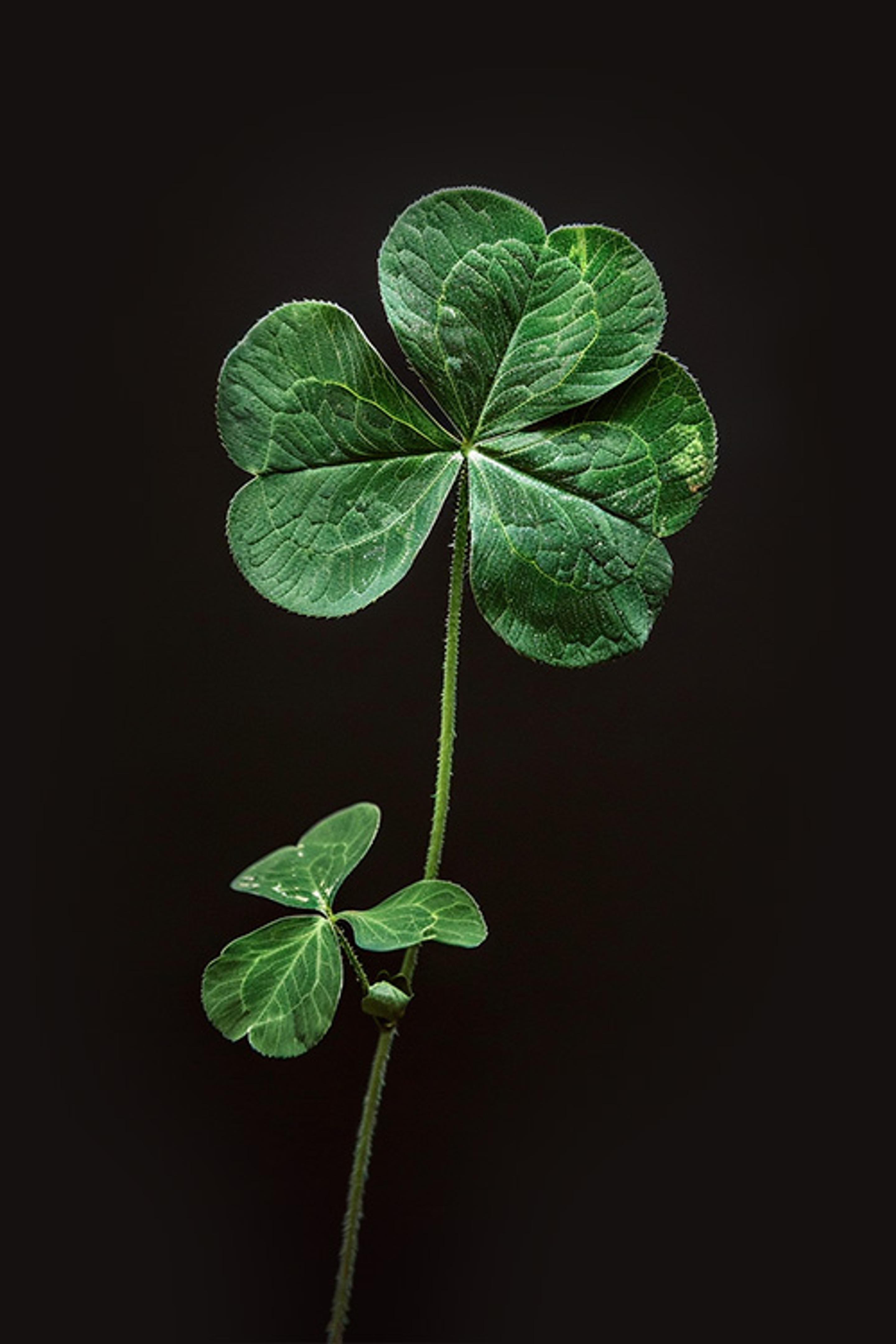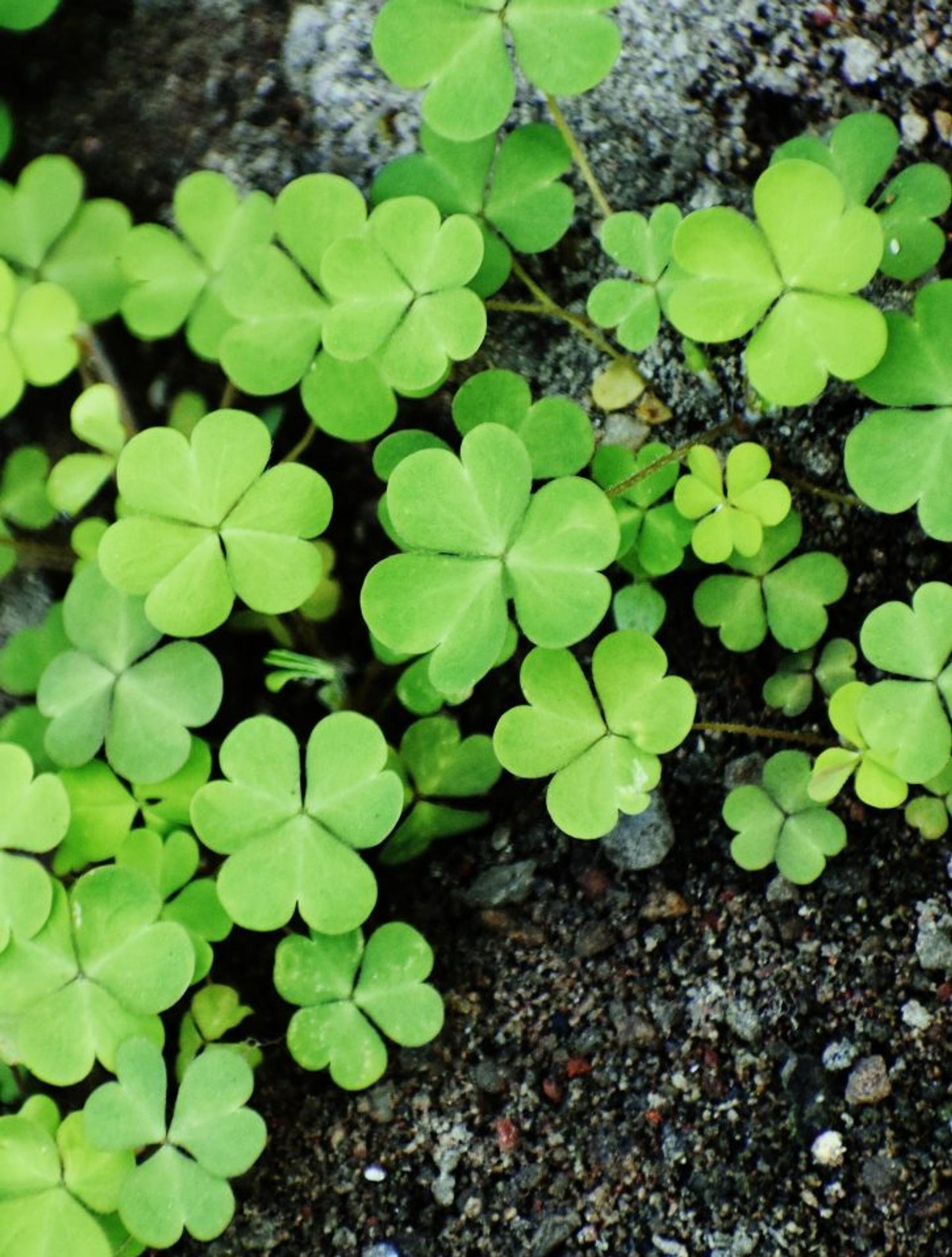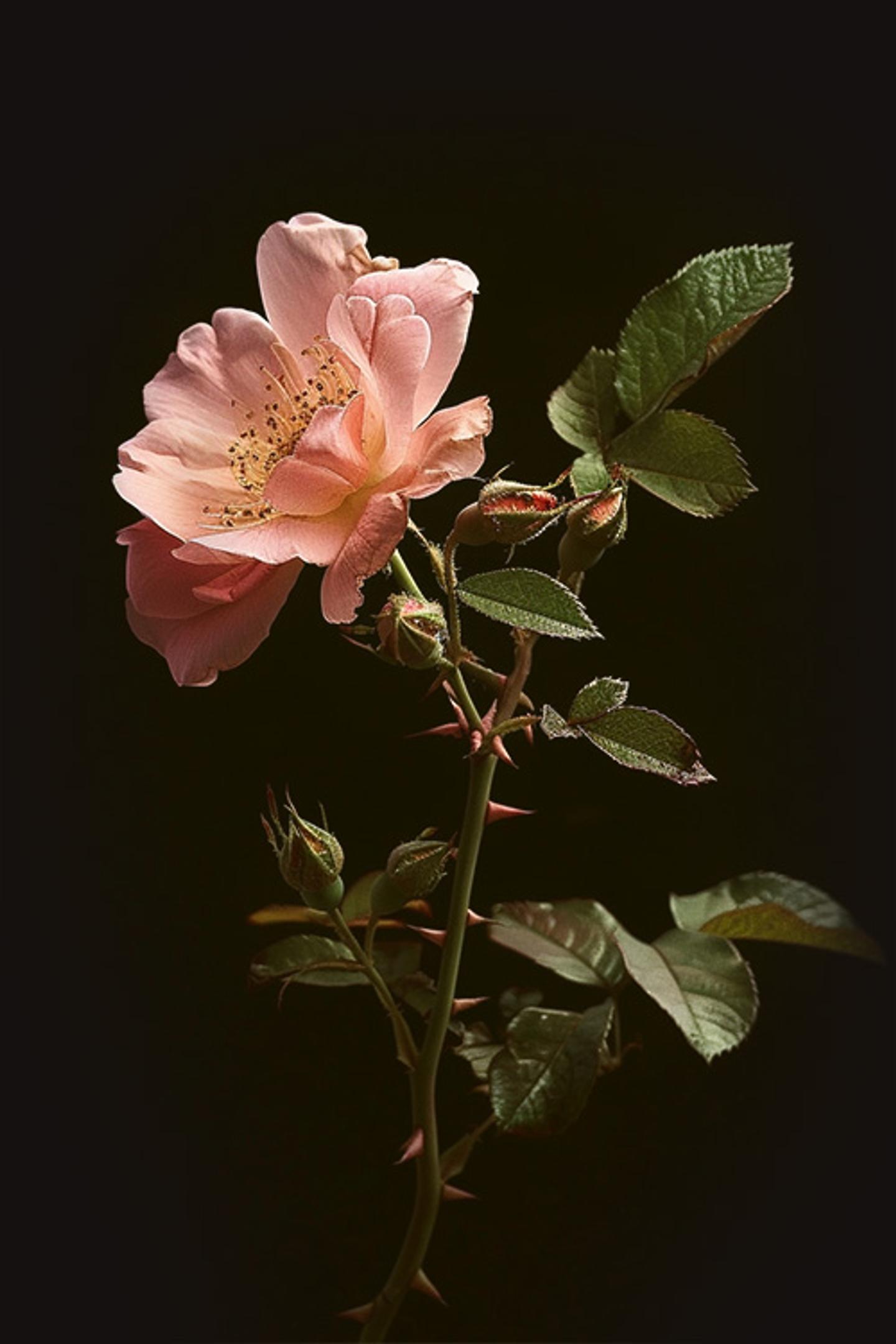Flower Meanings
Shamrock


The Meaning of Shamrocks
It’s no surprise that the shamrock has ingrained its roots deep in Irish culture.
The Patron Saint Patrick himself, made this plant the popular symbol it is today. Legend has it, St. Patrick used the three petals of the shamrock to teach the Trinity to Celtic pagans—which is why many images of Saint Patrick display him driving snakes out of Ireland with a cross and a sprig of shamrocks.
While this legend dates back to…well, way back when, it wasn’t until the 17th century that it became custom to wear the shamrock somewhere on your person during the feast of St. Patrick. Up until that point, the Irish wore a special St. Patrick’s cross made especially for the occasion.
In the 18th century, the shamrock was adopted as a symbol of St. Patrick but didn’t really gain much popularity until the 19th century, when emerging Nationalist movements took the shamrock and the harp as their emblems.
The original Irish shamrock, traditionally called seamróg, which translates to summer plant, is said to be a white clover, a common weed that, while beautiful, you’ve probably seen in your yard.
This clover is a stem-rooting perennial with three leaves that are quite aggressive, not in terms of throwing hands… but definitely in terms of spread!
Occasionally a fourth leaf will sprout, turning this clover into the ever so popular four leaf clover we spent our younger years searching for, and is said to bring good luck to whoever discovers it.
While it’s well known that St. Patrick used the shamrock as a way to teach the mystery of the Holy Trinity, it was never specifically mentioned in any of his writings. It is believed that Saint Patrick used this three-leaf clover to illustrate the Father, Son, and the Holy Spirit.
Thus, the shamrock was thrust to the main stage!
However, Saint Patrick was not the only culprit of the shamrock’s rise to fame. The Celtic druids also had a hand in its popularity.
The shamrock was originally associated with the Celtic goddess Ana or Anu, with its three leaves representing her status as the maiden, mother, and crone of Ireland. The number 3 also had roots in Irish tradition. It was known as the perfect number:
- Some believed it signified the three divisions of the soul (mind, body, and spirit).
- The three realms (land, sea, and sky).
- The underworld, middle world, and upper world.
- Love, Wisdom, and Truth
- Nature, Knowledge, and Truth
It makes sense why Saint Patrick used the Shamrock & the number 3 to explain the Holy Trinity to the Celts, knowing the importance of the number. [1]
Today, the shamrock is known far and wide as a symbol of Ireland and a staple at every St. Paddy’s Day celebration around the world.
Since it’s a symbol of good luck Irish brides are known for including shamrocks in their wedding bouquets and grooms in their boutonnieres. If you’ve ever been to the Emerald Isle, you may have noticed it’s included in many company logos such as Aer Lingus, as well as local sports teams. It’s also a huge part of an old Irish tradition called “drowning the shamrock.”
The tradition takes place on St. Patrick’s Day when the shamrock that has been worn in someone’s hat or lapel is removed and put into the last drink of the evening. A toast is then proposed, and the shamrock is taken from the bottom of the glass and thrown over the left shoulder. “Sláinte!” [2]
What Do Shamrocks Smell Like?
Why, shamrock’s smell like freshly poured Guinness, of course!
Kidding—but they do have a bit of an aroma to them. Unsurprisingly, these Irish beauties smell exactly like fresh-cut grass in the springtime.

"If you overvalue the uncommon, you spoil the uncommon and it begins to think of itself as something very precious! Don’t forget, a three leaf clover is as valuable as the five leaf clover!"
Mehmet Murat ildan
The History of the Shamrock
We’ve touched on this a bit already, but let’s dig a little bit deeper, shall we?
Once the emerging Irish Nationalists began using the shamrock (along with the harp) as one of their emblems, the Victorians over in England took this as an act of rebellion.
Irish regiments were then forbidden to display the shamrock. Fast forward to the 19th century and the shamrock became a legitimate symbol of rebellion, and anyone wearing it ran the risk of hanging. [2]
You may be familiar with the traditional Irish folk song “The Wearing of the Green”. The song itself dates back to the Irish Rebellion of 1798. At this time, not only was wearing shamrocks considered an act of rebellion but wearing the color green was also considered rebellious and was punishable by death.
If you give the song a listen, it clearly mocks this policy and its popularity encouraged the color green and the shamrock as symbols of Irish pride. The song remains a pub-favorite to this day!
Oh, Paddy dear, did you hear the news that’s going ’round?
The shamrock is forbidden by law to grow on Irish ground Saint Patrick’s Day no more to keep, his color can’t be seen
For there’s a bloody law again’ the Wearing of the Green.
I met with Napper Tandy and he took me by the hand
And he said, “How’s poor old Ireland and how does she stand?”
“She’s the most distressful country that ever yet was seen
For they’re hanging men and women there for Wearing of the Green.”
She’s the most distressful country that ever yet was seen
For they’re hanging men and women there for Wearing of the Green.[2]
Even before this, the shamrock certainly had a reputation. English poet Edmund Spenser, widely known for his epic poem The Faerie Queene, which highly praises Queen Elizabeth I, was the most famous of English chroniclers of Elizabethan Ireland.
His 1596 work, A View on the Present State of Ireland, painted the Irish as savages. He advocated the eradication of Irish crops, language, and traditions. He recounts in his work the Irish eating shamrocks out of necessity during the post-war famine as a highlight to their barbarity.
Fast forward to the 1800s, Ireland officially became a part of the United Kingdom, and the shamrock was incorporated into the official Royal Coat of Arms, alongside the English rose and Scottish thistle.
Also in the 19th century, as the Irish community began to spread globally, so too did the image of the shamrock. In 1836, the Ancient Order of Hibernians, which currently boasts roughly 80,000 members in the United States, Canada, and Ireland, was founded in New York. The AOH’s logo incorporates the shamrock, plus the Irish harp, the Irish flag, and the American flag. The flag of the city of Montreal, Quebec, incorporates a shamrock to highlight Irish immigrants as one of the four main ethnic groups that made up the city in the 1800s (the other three being French, English, and Scottish). Even today, the Boston Celtics basketball team’s mascot, “Lucky the Leprechaun,” wears a vest featuring the shamrock.
In more recent years, the shamrock has become far less politicized, but has remained a well-known symbol of Ireland. From 1985 on, it has been an official one! The shamrock was registered as a trademark of the Irish government and still is today.
Every Saint Patrick’s Day, the taoiseach of Ireland (Prime Minister) presents the president of the United States with Irish shamrocks in a Waterford Crystal bowl to symbolize the friendship and cooperation between the two western nations. The bowl often features a shamrock design.
This tradition began back in 1952 when the Irish ambassador to Washington sent a parcel of the three-leaved clovers to President Harry Truman. [3]
DID YOU KNOW - Shamrock Fun Fact
In Ireland, the Shamrock is considered extremely lucky if you find one with four leaves due to their rarity. The fourth leaf represents luck. [4]

How to Grow Shamrock
Shamrocks may grow from bulbs, corms, or rhizomes. Their hardiness varies between the different species, from hardy in zone 3 to frost tender.
- Tender species can be grown in containers and transferred indoors over the winter season.
- Shamrocks grow and bloom best in full sun, but will also tolerate partial shade.
- In hotter regions they will need protection from the intense afternoon sun.
- Only plant your shamrocks in very well draining soil and water regularly and thoroughly while they’re actively growing.
- Keep them relatively dry during the winter while they are dormant.
- Plant your shamrocks in planting beds in areas with wet winters. [5]
DID YOU KNOW - Shamrock Fun Fact
Only one in 10,000 clovers is found to have four leaves. [4]

How to Care for Shamrock
Growing shamrocks as house plants is also super popular, especially come spring time (and St. Paddy’s Day, of course).
They are very easy to care for in general, but do have some special requirements.
Shamrocks grow best when they’re grown in bright light but not in direct sunlight, relatively cool temperatures, and plenty of fresh air.
Keep the soil evenly moist when they’re actively growing, but allow them to slowly dry out once they begin to lose some “growing steam.”
Like most bulb type plants, shamrocks need a period of dormancy every once in a while (don’t we all).
Plants grown in containers will need two or three rest periods each year. When your plant begins to start looking a little down in the dumps, stop watering.
Once the leaves begin to turn brown, pull them off and set the planter somewhere it will stay cool and dry for about two or three months.
Once your shamrock has enjoyed its staycation, resume watering and fertilize. Next, sit back and watch your shamrock come back to life! [5]
When to Give Shamrocks as a Gift
Obviously perfect as a St. Patrick’s Day gift, shamrocks can be an amazing gift to celebrate the beginning of spring!

References:
Flower Meanings — keep discovering

Prickly Wild Rose
The prickly wild rose, often identified by their light pink or white petals and prickly stems, are not only beautiful in appearance, but their high vitamin C content and rose hip seeds are commonly used in many skin care products we see on the market today.

Protea
Native to Australia and South Africa, Protea are the epitome of unique and actually date back to prehistoric times!

Ranunculus
Arguably, one of the most beautiful blooms around—the ranunculus is a wedding-season favorite!

Rose
Roses, the world’s most popular flower, come in just about every color imaginable and express a vast range of emotions. Gardeners obsess over them, and even gas stations sell them. Break out the rose-colored reading glasses for a crash course in this iconic bloom.

Prickly Wild Rose
The prickly wild rose, often identified by their light pink or white petals and prickly stems, are not only beautiful in appearance, but their high vitamin C content and rose hip seeds are commonly used in many skin care products we see on the market today.

Protea
Native to Australia and South Africa, Protea are the epitome of unique and actually date back to prehistoric times!

Ranunculus
Arguably, one of the most beautiful blooms around—the ranunculus is a wedding-season favorite!

Rose
Roses, the world’s most popular flower, come in just about every color imaginable and express a vast range of emotions. Gardeners obsess over them, and even gas stations sell them. Break out the rose-colored reading glasses for a crash course in this iconic bloom.
Ready to send beautiful flowers?
Our guided experience helps you send a one-of-a-kind arrangement perfect for every occasion.
Send Flowers